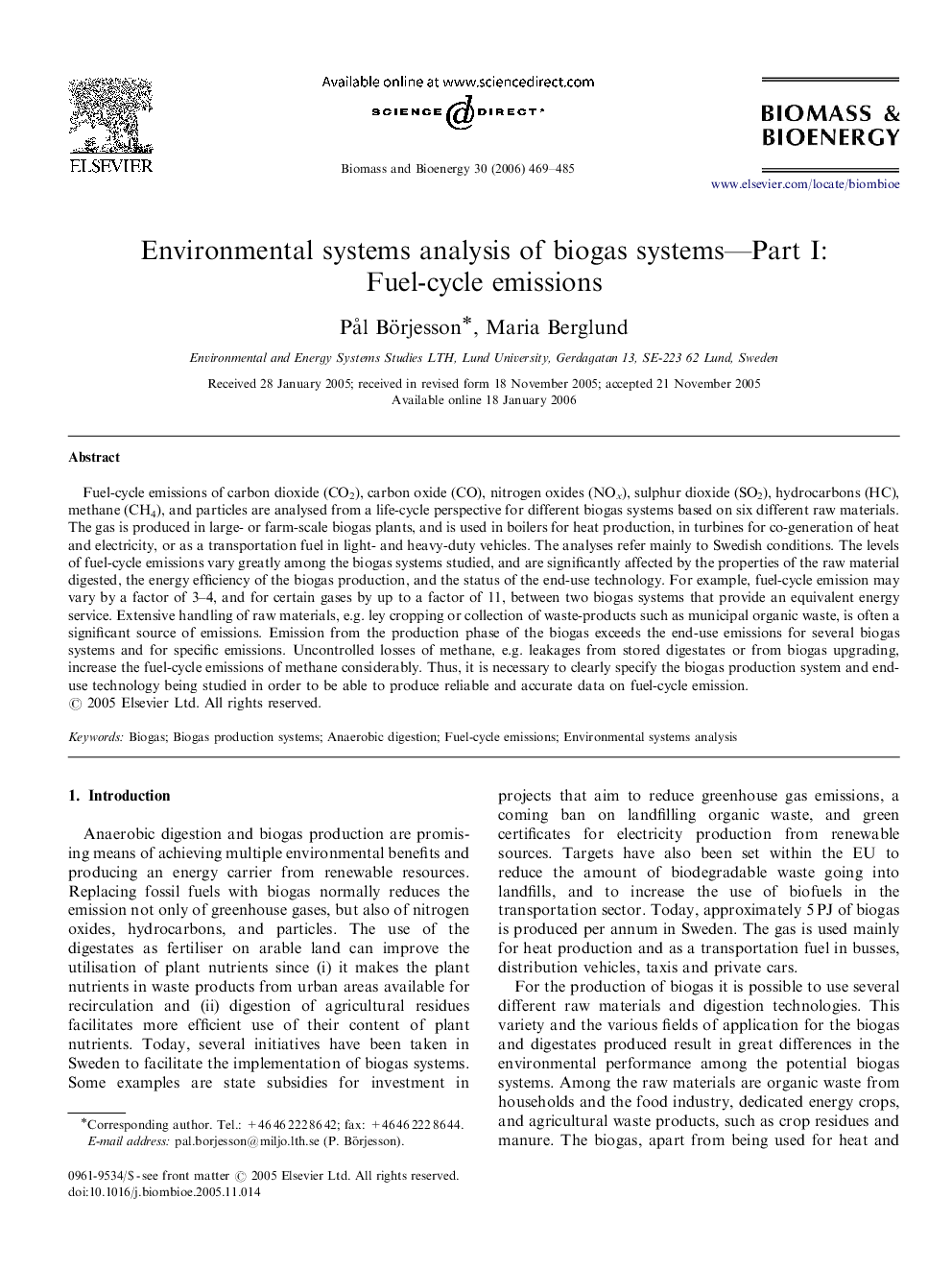| Article ID | Journal | Published Year | Pages | File Type |
|---|---|---|---|---|
| 678988 | Biomass and Bioenergy | 2006 | 17 Pages |
Abstract
Fuel-cycle emissions of carbon dioxide (CO2), carbon oxide (CO), nitrogen oxides (NOx), sulphur dioxide (SO2), hydrocarbons (HC), methane (CH4), and particles are analysed from a life-cycle perspective for different biogas systems based on six different raw materials. The gas is produced in large- or farm-scale biogas plants, and is used in boilers for heat production, in turbines for co-generation of heat and electricity, or as a transportation fuel in light- and heavy-duty vehicles. The analyses refer mainly to Swedish conditions. The levels of fuel-cycle emissions vary greatly among the biogas systems studied, and are significantly affected by the properties of the raw material digested, the energy efficiency of the biogas production, and the status of the end-use technology. For example, fuel-cycle emission may vary by a factor of 3-4, and for certain gases by up to a factor of 11, between two biogas systems that provide an equivalent energy service. Extensive handling of raw materials, e.g. ley cropping or collection of waste-products such as municipal organic waste, is often a significant source of emissions. Emission from the production phase of the biogas exceeds the end-use emissions for several biogas systems and for specific emissions. Uncontrolled losses of methane, e.g. leakages from stored digestates or from biogas upgrading, increase the fuel-cycle emissions of methane considerably. Thus, it is necessary to clearly specify the biogas production system and end-use technology being studied in order to be able to produce reliable and accurate data on fuel-cycle emission.
Related Topics
Physical Sciences and Engineering
Chemical Engineering
Process Chemistry and Technology
Authors
PÃ¥l Börjesson, Maria Berglund,
